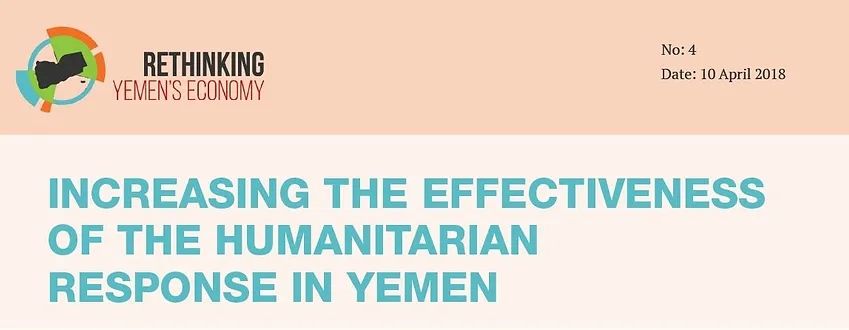Background
The United Nations Office for the Coordination of Humanitarian Affairs reported in the 2018 Humanitarian Needs Overview (HNO) for Yemen that 22.2 million people – 80 percent of the population – were in need of humanitarian assistance or protection at the end of 2017, of which 11.3 million were in acute need. This included 17.8 million people who were food insecure, of which 8.4 million were “at risk of starvation.”The humanitarian response efforts last year included eight UN agencies, 36 international non-governmental organizations (INGOs) and 147 national non-governmental organizations.The challenges facing these humanitarian actors have been profound, primary among them being the immensity of the crisis. Yemen is currently experiencing the largest humanitarian emergency in the world, the scale and scope of which are severely challenging humanitarian actors’ capacity to assist all those in need, as are the range of need sand the geographic area across which they are spread.
Many factors have also heavily impacted humanitarian actors’ ability to conduct needs assessments, monitor outcomes and gather other data critical to implementing timely evidence-based programming.
The warring parties’ sensitivities to such data collection, in particular in Houthi-controlled areas, has also often led them to actively block such activities. While the Humanitarian Country Teams (HCTs), Clusters, and Inter-Cluster Coordination (ICC) between the international humanitarian actors are well established and functioning, there is limited coordination with the Yemeni private sector and with other local actors. This creates an inherent gap between the demand and supply of aid supplies within the country. It misses the opportunity for the humanitarian actors to address their current inability to stock food and supplies at sites around the country and potentially increases costs of delivery as the humanitarian actors try to build their network and infrastructure for delivering aid to locations where they did not operate previously.
